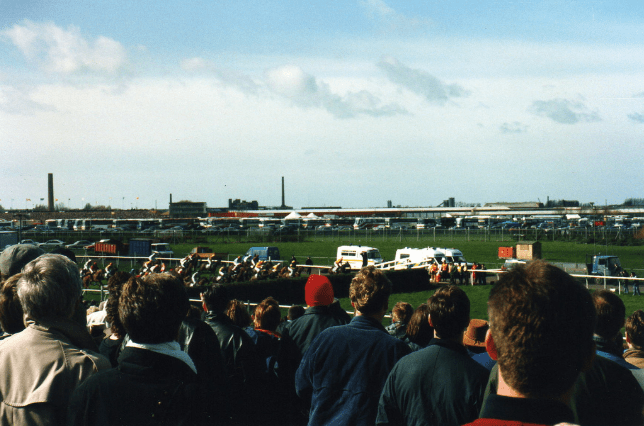


Horseracing may not be broadcast as loudly on the European stage as football is, but that doesn’t mean it’s any less exciting or significant for its spectators. The excitement of horse racing, alongside its long history attached to Europe’s wealthiest and most powerful people, has led to some horse racing events becoming immense events and attractions. Let’s look at the horse races that have become the biggest across Europe.
Perhaps the world’s best-known and popular horse race is Liverpool’s Grand National. The race, which you may have heard called by its more formal title, the Grand National Handicap Steeplechase, has been an annual event since 1839.
The event takes place over three days in early spring (in late March or early April) at the Aintree Racecourse. In the three days, competitors dash through the course and complete two laps of the track, which includes a series of jumps and tests of agility. This year’s event saw 34 horses compete, with I Am Maximus coming in first.
The event is not only a demonstration of the skill and agility of both jockeys and horses but also a presentation of style and pageantry. The famous Ladies’ Day, the second day of the event, is known for its displays of style and fashion, with the attendees’ outfits making headlines.
The Cheltenham Festival is a four-day-long racing event, with seven races each day. It’s most famous for the Cheltenham Gold Cup race, which takes place on the event’s final day. The Gold Cup race is a steeplechase with horses covering just over three miles of track, fences, and ditches.
The Cheltenham racecourses have a long history, with the first race recorded in 1815. The formality of the course and its events, alongside their popularity, increased in the decades and centuries that followed that first race. 2019 marked the most notable year, with over 266,000 spectators flocking to watch the races unfold.
Much like the Grand National, the Cheltenham Festival is another event of fashion and style, often attended by the royals. This year’s March event saw Queen Camilla join spectators.
Each year in October, the Longchamp Racecourse hosts the Prix de l’Arc de Triomphe, a two-day event that began in 1920. Unlike the Grand National and Cheltenham Festival, the races aren’t steeplechases but flat races free of jumps and ditches. The course covers one and a half miles.
The Prix de l’Arc de Triomphe is not only a major attraction for horse racing’s top competitors and trainers but is also hugely popular among spectators worldwide.
The Palio di Siena is a long-standing event that occurs twice yearly in Siena, Italy. The event has taken place for centuries, starting in 1701. It is part of a larger festival in the city where parades, ceremonies and more take place. The only times the race hasn’t happened are during war times.
The race is a huge spectacle that draws tourists to the city every year for a chance to see it. The race occurs in the city centre, covering less than a mile of track. Though short, the track is not easy, as it’s filled with challenging sharp turns that deliver an overall sense of drama and excitement. It has fewer rules and expectations than other major horse events, and jockeys must perform the race without a saddle.
The Royal Ascot is a formal annual event that occurs in June and spans over five days. The races happen at the Ascot Racecourse, founded in 1711 by Queen Anne, and the event has been held annually since 1911. Each day of the Royal Ascot begins with a horse-drawn royal procession.
This connection to the royal family draws the rich and the famous to this event, all dressed to the nines and often wearing hats that garner as much attention as the races themselves.
The Epsom Derby occurs each year on the first Saturday of June at the Epsom Downs Racecourse. Like the Prix de l’Arc de Triomphe, it’s a flat race that spans a one-and-a-half-mile track. The race takes place on grass or turf.
Races at the Epsom Downs Racecourse have occurred since 1661, and patrons of these early races were inspired to start the Epsom Derby in 1779. In May of the following year, the first Epsom Derby took place. Since then, it has been an annual event that’s highly attended, even in the face of animal rights protestors who have concerns over the treatment of the animals.
The Irish Derby has a long history, with its first race occurring in 1866. The event is held at the Curragh Racecourses in late June or early July. Like the Epsom Derby and Prix de l’Arc de Triomphe, it’s a one-and-a-half-mile flat racecourse. The event has similar race rules and regulations as the Epsom Derby. Because of this and the fact that the horse racing events are held about a month apart, there is a lot of overlap between competitors at the Irish Derby and the Epsom Derby.
For many, horseracing events are more than sport and competition; they’re an experience steeped in history, pomp, and circumstance. Because of this reputation, most of these world-famous races now draw spectators worldwide who want to experience the sophistication and excitement for themselves. Many of the races have also grown in scale into events and experiences that extend beyond the races to encompass festivities like live entertainment and parades.
Though they draw many spectators to the tracks, the events themselves can be enjoyed from the comfort of home — meaning anyone can join in on the excitement the events create or even participate in betting on them. But just like it’s important to read a review by BonusFinder UK before signing up with an online casino, make sure you only use reputable online sports books.